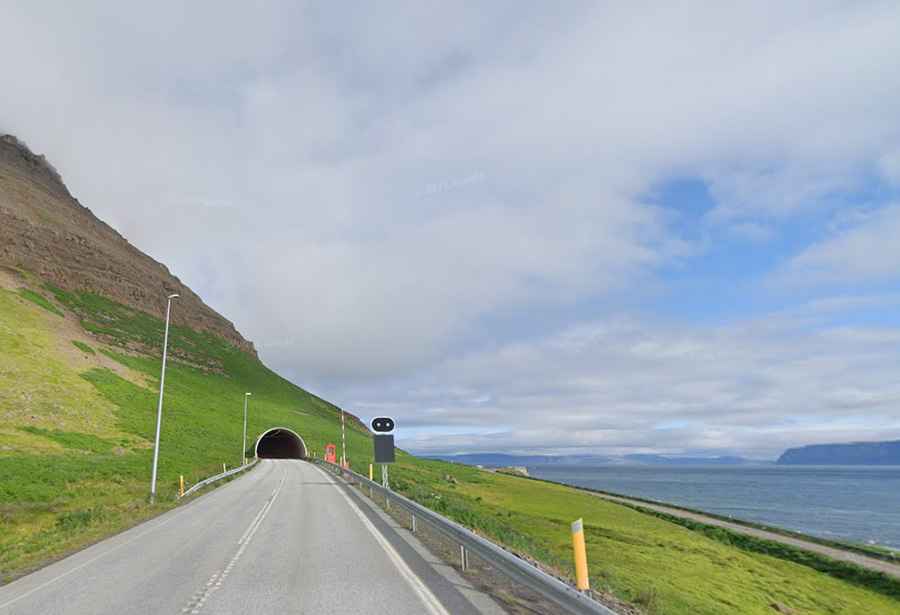How Many Tunnels Are There in Iceland?
Iceland offers a unique driving experience. The road system of the country features 14 road tunnels, some of which stand out for their unique features, including an underground crossroad. Built since the 1960s, these tunnels have improved transportation across the country, making travel faster and safer between regions.

Here’s an overview of 10 of the most significant tunnels in Iceland.
Héðinsfjarðargöng
Iceland’s longest tunnel, completed in 2010, stretches for 11 kilometers (6.83 miles) and links Ólafsfjörður and Siglufjörður in North Iceland. Located north of Akureyri, the tunnel opens after 7.1 kilometers (4.4 miles) in Héðinsfjörður and continues another 3.9 kilometers (2.4 miles) to Siglufjörður. Like most of Iceland’s tunnels, Héðinsfjarðargöng is toll-free.
Breiðadals and Botnsheiði Tunnels
Opened in 1996, the Breiðadals tunnel is 9.12 km (5.66 miles) long. It has two lanes in some sections and single lanes in others. Located west of Ísafjörður in the Westfjords, this tunnel includes a unique internal crossroad, where drivers may encounter traffic from Suðureyri, adding to the tunnel’s one-of-a-kind experience. There are frequent passing places to safely navigate oncoming traffic.
Bolungarvíkurgöng
North of Ísafjörður, this tunnel opened in 2010 and spans 5.4 kilometers (3.36 miles). It’s a straightforward two-lane tunnel with good lighting, connecting Ísafjörður to Hnífsdal and ultimately to Bolungarvík.
Arnardalshamar
Iceland’s first tunnel, Arnardalshamar, constructed in the early days of tunneling, is 30 meters (98 feet) long with two lanes. Located between Ísafjörður and Súðavík, this tunnel marks the beginning of Iceland’s tunnel history.
Strákagöng
Opened in 1967, Strákagöng is a short 800-meter (0.5-mile) single-lane tunnel in northern Iceland. Here, drivers must follow Icelandic single-lane rules, stopping at passing places on the right to allow oncoming vehicles to pass.
Múlagöng
The Múlagöng tunnel connects Dalvík and Ólafsfjörður, spanning 3.4 kilometers (2.11 miles). Opened in 1990, it is a single-lane tunnel with passing areas throughout its length.
Hvalfjarðargöng
The Hvalfjörður tunnel is one of the most well-known tunnels in Iceland, primarily due to its proximity to Reykjavík. Located about 30 km (19 miles) north of the capital on the Ring Road, it is a key route for those heading towards the Snæfellsnes Peninsula or the Westfjords. The tunnel stretches 5.7 km (3.5 miles) under the Hvalfjörður fjord, making it one of the deepest sea tunnels in the world, with a depth of 165 meters (541 feet) below sea level. Opened in 1998, the tunnel was built to eliminate the lengthy detour around the fjord, which added about an hour to trips. Now, the same journey takes less than 7 minutes. Since 2018, the tunnel has been toll-free, following the removal of the previous toll charge.
Oddsskarð and Norðfjarðargöng
The Oddsskarð tunnel, located north of Eskifjörður, opened in 1977 and spans 640 meters (0.4 miles). At 600 meters above sea level, this single-lane tunnel was toll-free with passing areas, but it has since been decommissioned for daily use. It was replaced by the new Norðfjarðargöng tunnel, a 7.5-kilometer (4.66 miles) two-lane tunnel just northwest of Eskifjörður. This modern tunnel offers improved safety and efficiency for traffic in the area.
Fáskrúðsfjarðargöng
Opened in 2005, Fáskrúðsfjarðargöng runs for 5.9 kilometers (3.67 miles), providing two-way lanes to easily connect Eastfjords communities.
Almannaskarðsgöng
The Almannaskarð tunnel, opened in 2005, is 1.3 kilometers (0.8 miles) long with two lanes. It significantly improved access between Iceland’s south and east, offering a safe alternative to previous challenging mountain routes.